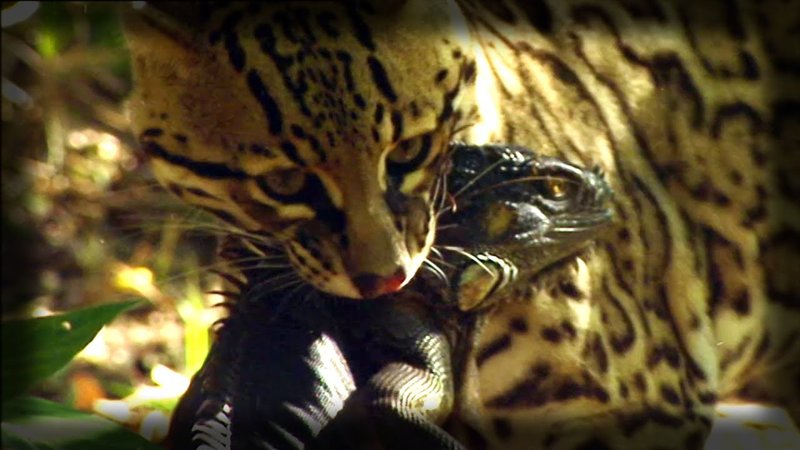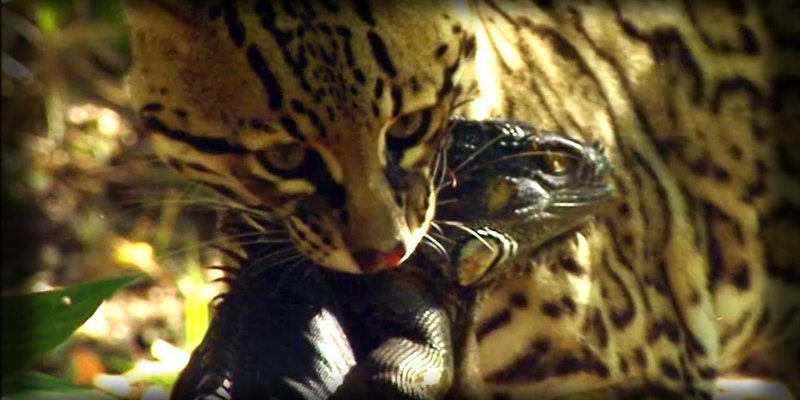
Imagine sipping your coffee while watching a tiny animal silently stalk its prey, blending effortlessly into the forest floor. That’s an ocelot in action! They navigate through dense jungles, savannas, and even scrublands, showing off a range of hunting strategies that are nothing short of impressive. In this article, let’s dive into what ocelots eat and how they’ve mastered the art of hunting.
Understanding the Ocelot’s Environment
Ocelots typically roam in a variety of habitats, including rainforests, scrublands, and grasslands. Think of these areas as their hunting grounds, where they can rely on stealth and agility. Their home range can vary significantly based on the availability of food and the density of the vegetation.
Interestingly, ocelots are largely nocturnal, meaning they’re most active at night. This behavior helps them avoid competition with larger predators and also allows them to use the cover of darkness to sneak up on their prey. Just picture a sleek, spotted cat prowling through the underbrush, its eyes glinting in the moonlight.
The climate of their habitat also plays a big role in what these cats eat. In tropical climates, for instance, there is an abundance of prey, which gives the ocelots plenty of options. From small mammals to birds and reptiles, they adapt well to their surroundings.
What Do Ocelots Eat?
Here’s the thing: ocelots are opportunistic feeders, which means they don’t stick to a strict diet. Their meals can include a mix of different animals depending on what’s available. Let’s break down some of their primary food sources:
- Rodents: Mice and rats are staples in an ocelot’s diet. These small mammals are plentiful and easy to catch.
- Birds: Ocelots will often take advantage of ground-nesting birds. They are stealthy enough to sneak up and snatch them right off the ground.
- Reptiles: Lizards and snakes also make the cut. They provide a good source of protein and can be found in many of the ocelot’s habitats.
- Small mammals: Animals like rabbits and young opossums are also potential meals. Ocelots can take down prey larger than themselves with their agility and strength.
What’s fascinating is how diverse their diet is. Depending on the region, ocelots might even feast on fish or insects. This adaptability is key for their survival, allowing them to thrive in varying environments.
Hunting Techniques of the Ocelot
Ocelots have a few tricks up their sleeves when it comes to hunting. They’re not just running after their prey; they employ strategies that showcase their intelligence and physical skills. Here are some of the common methods they use:
1. Stalking: Much like a cat at home playing with a toy, ocelots will stalk their prey for long periods. They use cover from grass or bushes to hide their approach, moving slowly and quietly.
2. Ambush: Once they’re close enough, ocelots often wait patiently for the right moment to pounce. Their strong hind legs allow them to launch themselves towards their target, surprising it with speed and agility.
3. Climbing: These agile felines are also great climbers. They sometimes opt to hunt from a tree, using elevation to spot prey from above. Imagine an acrobat, perfectly balanced and ready to leap at any moment!
4. Water Hunting: Surprisingly, ocelots are good swimmers too. In areas with water sources, they might venture out to catch fish or frogs, showcasing their adaptability once again.
By employing these techniques, ocelots ensure a steady supply of food, which is crucial for their survival in the wild.
The Role of Camouflage in Hunting
Have you ever noticed how some animals blend in seamlessly with their surroundings? That’s exactly what ocelots do with their stunning coats. Their fur is covered in beautiful spots and stripes, making it easy for them to camouflage among the leaves and shadows of their habitats.
This natural disguise not only helps them avoid detection by prey but also protects them from larger predators. When an ocelot lies still, it can be almost impossible to spot. It’s a bit like when you wear a dark outfit at a party to blend in with the crowd—sometimes, it’s all about being unseen!
Their coloration also changes slightly based on the environment. For example, ocelots in denser forests tend to have darker fur, while those in lighter habitats develop a more golden hue, which aids in camouflage.
Impact of Diet on Ocelot Behavior
The diet and hunting strategies of the ocelot significantly influence its behavior. Being a carnivorous and opportunistic feeder means that ocelots are constantly on the move, searching for their next meal. This behavior affects their social structure, territory size, and overall health.
Ocelots are generally solitary creatures, preferring to hunt alone. Each individual requires a substantial area to roam and hunt effectively. Their home range can overlap with others, but much of the time, they prefer their own space. It’s a bit like how we might enjoy dining out with friends, but sometimes, we crave a quiet meal alone.
Regular access to food affects their energy levels and reproductive success. Cats that hunt successfully are more likely to thrive and reproduce, passing on their hunting skills to the next generation.
Conservation and Challenges Facing Ocelots
Despite their adaptability, ocelots face significant challenges in the wild. Habitat loss due to deforestation, human encroachment, and climate change threaten their populations. As forests are cut down for agriculture or development, ocelots lose their homes and hunting grounds.
Additionally, they often fall victim to poaching and illegal trafficking for their beautiful pelts. Conservation efforts are underway in many regions to protect these incredible animals, but it’s a constant battle.
Here’s the thing: protecting ocelots isn’t just about saving a beautiful species. It’s about maintaining the balance of ecosystems where they play a crucial role as predators. Healthier populations of ocelots can indicate a thriving environment.
The diet and hunting strategies of the ocelot reveal much about their adaptability and resilience as a species. From their diverse food sources to their impressive hunting techniques, these cats remind us of the beauty and complexity of nature. While they face serious challenges, understanding their behavior and habitat needs is a critical step toward ensuring their survival.
So, the next time you come across an ocelot picture or hear their name, take a moment to appreciate these remarkable creatures and how they navigate their world. They really are a testament to the wonders of wildlife!

